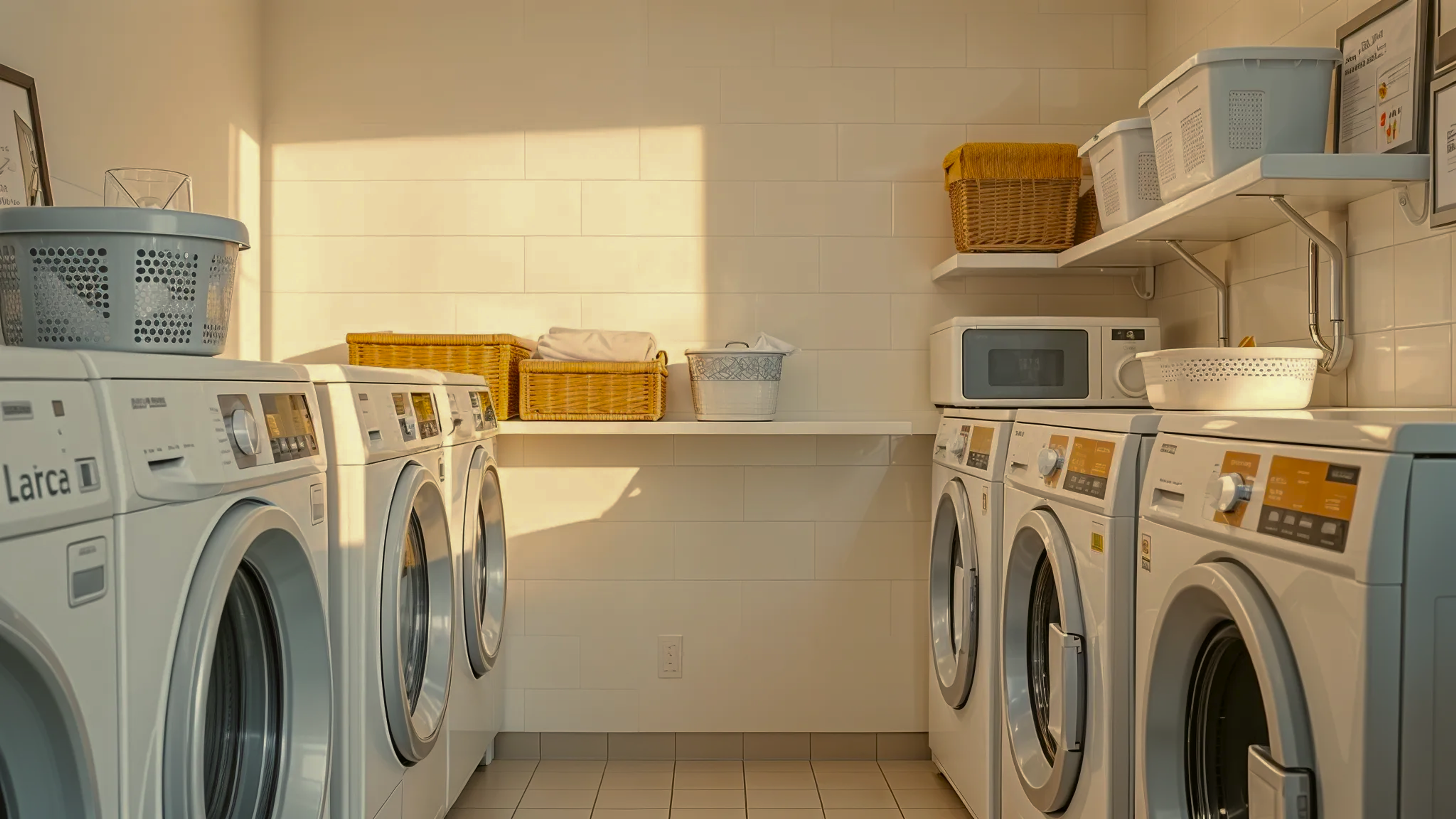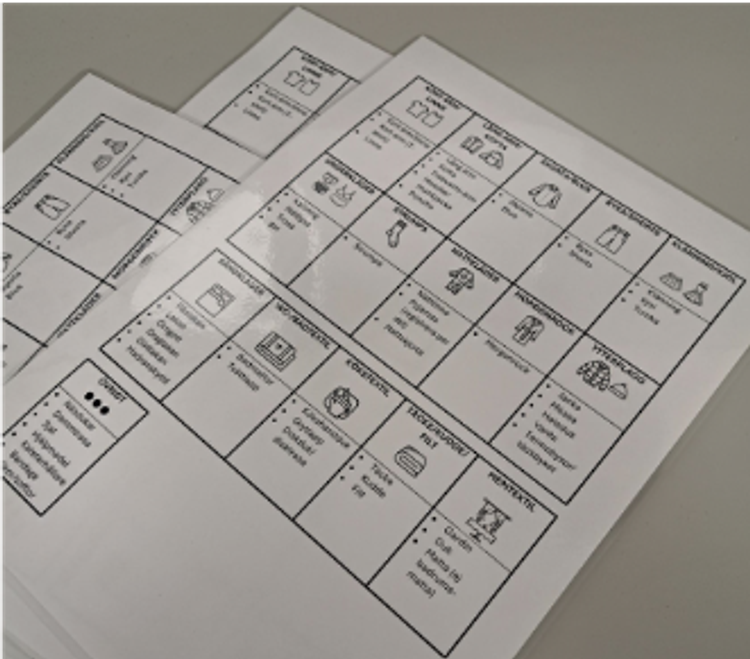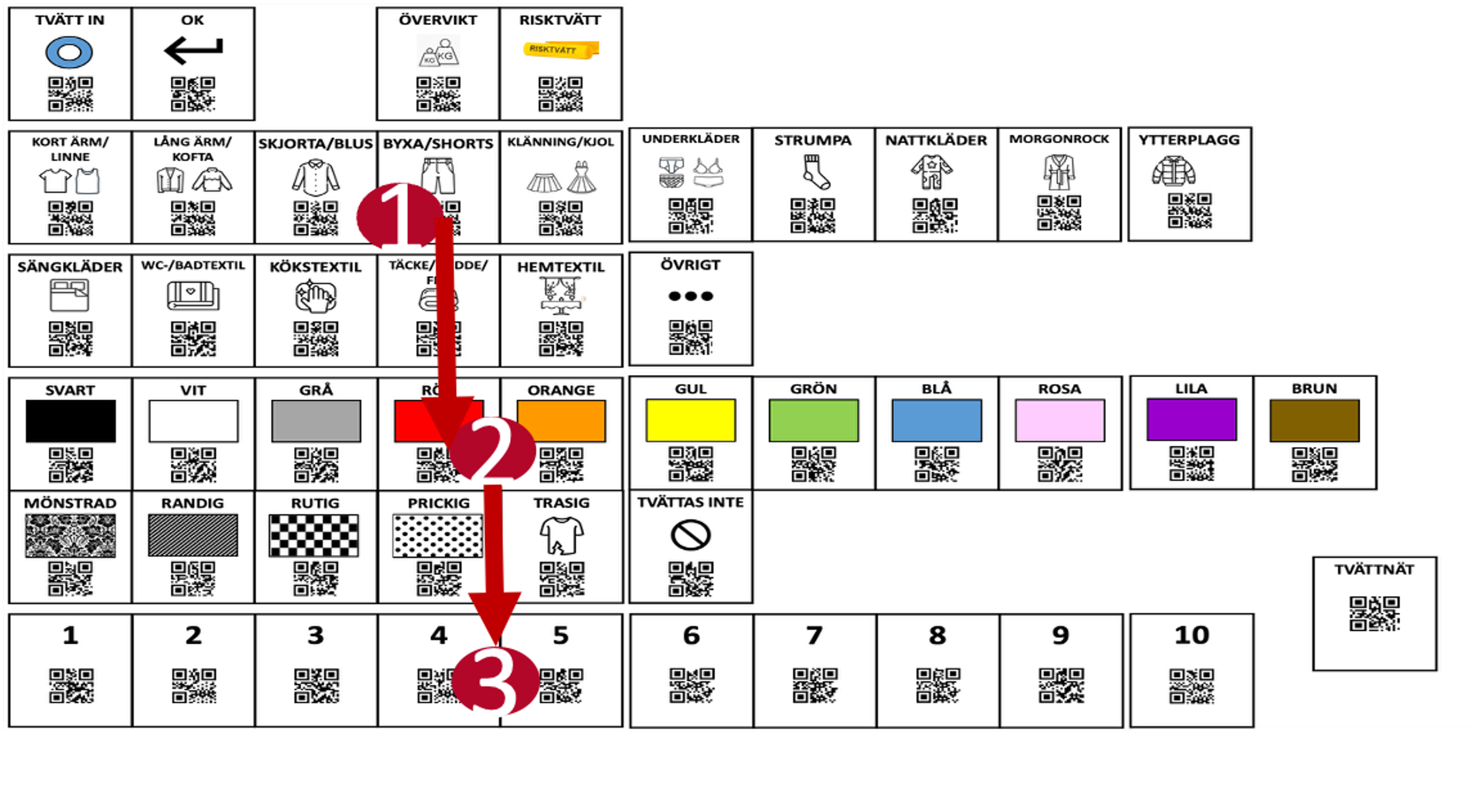Samhall – Inclusive Design in Practice: An Improved Workflow in Samhall’s Textile Services
Public service
【
Johanna H
】
user studies, workshops, improved workflow, piktograms.

About the project
How do you create work tools that not only function, but function for everyone? When Samhall set out to improve workflows within its textile services, the goal wasn’t just efficiency. It was about accessibility, inclusion, and ensuring more people feel confident in their roles. Together, we conducted a feasibility study where we tested, mapped, and developed standardized solutions that make it easier to do the right thing, regardless of individual circumstances.
Purpose
Samhall’s mission is to create meaningful job opportunities for people with disabilities. In this project, they aimed to improve the user experience of one of their most important systems while also reducing errors, stress, and cognitive load in work tasks. The goal was to create a more inclusive and sustainable way of working.
Results
Through usability testing, workshops, and iterative work on information architecture, we developed a solution that combines digital and physical tools. We created a pictogram system for laundry registration and reconciliation, complemented by QR codes and a clear quick guide. The result was a 50% reduction in registration time, a lower risk of input errors—and most importantly: increased accessibility and confidence in the work process.

A solution that works for everyone
The pictogram made it easier to understand and carry out tasks, even for individuals with cognitive impairments or whose first language is not Swedish. By resembling something familiar, like scanning items in a store, it lowered the barrier to using digital tools. The quick guides created a shared understanding across different tasks and reduced the risk of misunderstandings.
"It wasn’t perceived as digital, which made it easier to grasp"
From Observation to Improvement
We started in Kalmar, where a local solution using pictograms had been developed. In an effort to simplify and standardize the workflow, a simplified pictogram was created. Through observations, interviews, and workshops, we identified challenges with the simplified version, such as missing colors in the system or difficulties in knowing where certain garments should be sorted.
The simplified pictogram influenced the laundry reconciliation at the end of the process, which we demonstrated internally by mapping out the workflows. Based on these insights, we created a clearer structure for the pictogram, resulting in a solution that suited employees throughout the entire workflow.

Small Adjustments, Big Impact
We developed a version suitable for both right- and left-handed users and created a quick guide explaining how to approach laundry registration across different categories. This made it easier to do things right, and harder to do them wrong. It also became clear that this wasn’t just about technology, but about creating the right conditions for employee development and a better digital work environment.
And the best way to enable employee development is to design the solution together with the employees.
Design That Includes
Without service design and process mapping, the solution could have risked sub-optimizing one step in the process while making a later step more difficult. By starting from the users’ needs and everyday realities, we were able to create a system that not only works, but works better for more people. That’s how we create real value.
In project

Johanna Holm

